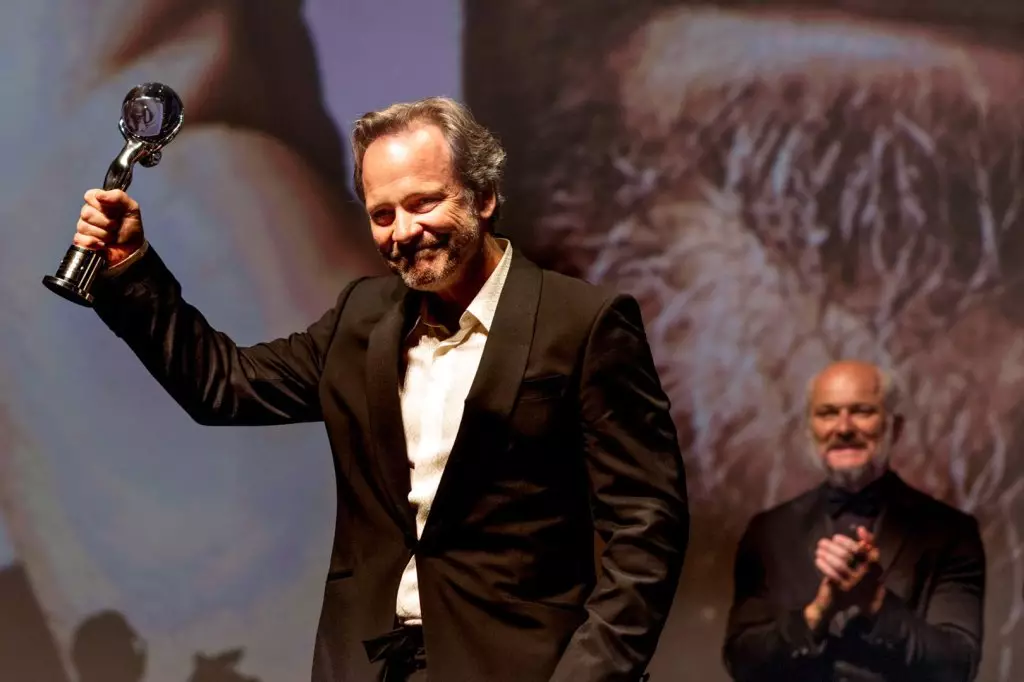In an era increasingly marked by division and disconnection, the role of art as a catalyst for unity and resilience remains profoundly vital. The recent farewell to Czech legend Jiří Bartoška at the Karlovy Vary International Film Festival offers a compelling reminder of this truth. Bartoška’s lifetime of dedication to cinema underscores the transformative power of storytelling, not merely as entertainment but as a means of forging human connections across borders and differences. The festival’s acknowledgment of his legacy is more than an homage; it’s a testament to art’s capacity to withstand societal fractures and inspire collective hope.
Throughout the festival, a distinct undercurrent of celebration for shared human experiences emerged—whether in the playful antics of the trailers, the visceral interpretative dance routines, or the heartfelt speeches by honorees. These moments exemplify a persistent belief that creativity is inherently intertwined with resilience, serving as a rallying point for individuals seeking meaning amidst chaos.
The Role of Celebrities as Cultural Ambassadors
Vicky Krieps and Peter Sarsgaard, two prominent figures celebrated at the event, vividly demonstrate how artists and actors transcend their craft to become symbols of deeper social dialogue. Krieps’s candidness about her initial feeling of inadequacy exemplifies vulnerability—an essential ingredient for authentic connection. Her heartfelt declarations about cinema’s universal role echo a broader truth: movies are not merely light escapism; they are powerful tools for empathy, understanding, and peace.
Krieps’s emphasis on cinema’s ability to deliver messages that cross borders without preconditions highlights an optimistic vision of art’s potential. Despite her self-deprecating humor, her message underscores an essential insight: the value of perseverance and authenticity in a world eager to categorize and exclude. Her perspective encourages aspiring artists and audiences alike to embrace imperfection, recognizing that genuine human stories are what truly forge enduring bonds.
Similarly, Sarsgaard’s remarks carry a palpable sense of responsibility. His acknowledgment of the collective effort required to produce meaningful art touches on a universal truth—art cannot flourish in isolation. His critique of societal fragmentation, allusions to political polarization, and call for unity evoke a compelling argument: art must be a collective act, capable of bridging the widening gaps in society. His invocation of Václav Havel’s words underscores a timeless message: empathy and shared purpose are essential to overcoming division.
Interpreting Artistic Rituals and Symbolism
Beyond speeches, the festival’s unconventional promotional materials and performances reveal a penchant for provocative, symbolic expression. The avant-garde dance routines, featuring androgynous dancers and experimental lighting, serve as reflections of societal ambiguity and upheaval. These performances challenge audiences to interpret them as allegories for modern anxieties—an invitation to confront discomfort for the sake of growth and understanding.
Such interpretative art forms emphasize the importance of resilience through creative confrontation. In turbulent times, art does not shy away from discomfort; instead, it dramatizes societal conflicts in ways that compel viewers to reflect, question, and ultimately find common ground. The Lynchian aesthetic employed by these performances is not arbitrary; it’s a deliberate attempt to mirror the chaos and uncertainty that pervade contemporary life, urging us to navigate them with courage and openness.
Legacy and the Future of Artistic Expression
The festival’s approach to honoring its icons reveals an intentional prioritization of authenticity over spectacle. The tradition of showcasing previous winners “trash-talking” or playfully misusing their own awards underscores an attitude that values humility and humor—core qualities necessary for genuine resilience. By celebrating imperfections and playful irreverence, the event posits that strength lies in embracing the flawed and the vulnerable.
This ethos extends to the broader conversation on the future of cultural institutions and artistic industries. The emphasis on collective effort, as highlighted by Sarsgaard, underscores a critical necessity: safeguarding the spaces where art can flourish amid societal discord. Whether through supporting independent filmmakers, fostering inclusive narratives, or simply ensuring that the art remains accessible, the message is clear—cultural resilience depends on community and collective action.
As the festival concludes, it leaves a lasting impression: art is a vital force that not only reflects society but actively shapes its capacity to heal and unite. In a world increasingly defined by division, cinema and performance serve as beacons of hope, inspiring individuals to see beyond their differences and believe in the collective strength of human creativity. This celebration of artistic resilience reminds us that, even in the darkest times, it is our shared stories and unwavering spirits that will steer us toward a brighter, more compassionate future.
